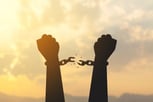Identifying which of the recovering person’s substance use triggers are being overlooked by treatment providers, friends, and other 12-step group members is crucial in developing an effective recovery program.
Based on a 2015 study published by the Society for the Study of Addiction, situations, people, or objects uniquely relevant to a person’s drug or alcohol use have a greater impact on the recovering person’s tendency to relapse, as compared to generally recognized elements they are taught to avoid.
Cues, or “triggers,” consist of various types of stimuli in the environment that prompt a particular behavior or increase the risk of a certain type of response.
Some cues can affect a large number of people in a number of ways. One example of a general cue setting off a reaction is public speaking which can set off anxiety in some people. Other cues, however, may be personally relevant and are specific only to one individual. The aforementioned study looks at how cues, both general and specific, affect recovering people's cravings for substances such as drugs and alcohol.
Person-Specific Cues Vs. Substance-Specific Cues
Drs. Melina Fatseas and Fuschia Serre, along with other authors, investigated the behaviors of 132 outpatient individuals being treated for alcohol, tobacco, cannabis, or opiate addiction. Using mobile technologies, participants were questioned four times a day regarding their drug or alcohol cravings, as well as the types of cues that produced or were associated with them.
Researchers then categorized the reported intensity of each person’s cravings under general substance-specific cues and person-specific cues. General substance-specific cues, for instance, would be a heroin addict seeing a syringe. On the other hand, person-specific cues would include a meeting with a specific person with whom a participant had traditionally used their substance of choice with.
Findings suggest that only person-specific cues were associated with the reported increase in cravings over the hours of the day. While general cues were also reported to set off cravings, the participants’ desires tend to dissipate. Person-specific cues, however, were linked to an ever-increasing intensity of cravings among the participants. This concludes that person-specific cues produce a much more robust effect on a person’s drug or alcohol craving than more general substance-specific cues.
Avoiding Relapse Through Understanding or Person-Specific Cues
This information is extremely helpful for individuals recovering from some type of substance use disorder because they can now exercise more vigilance to remain on the path of recovery.
A recovering person can take an inventory of person-specific situations or cues that he/she considers as a personal trigger. This may be comprised of certain people, environments, and even things like particular songs or movies. Perhaps it will even include going to a favorite bar, arguing with a spouse, getting off work on a Friday, or bowling with friends.
Through this list, it will be easier for those in recovery to recognize relapse triggers when they pop up, understand their own reactions and take the necessary steps to stay in control.
If you or someone you know is seeking help with addiction, please visit our directory of treatment centers or call 866-606-0182 to start the path to recovery today.








